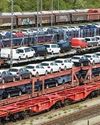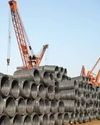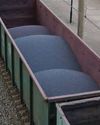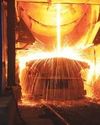
Value of steel imports tracked by government’s Steel Import Monitoring System has jumped 10 percent to $822 in August from $746 m in July, a growth of 10.11 percent in dollar terms.
June imports were even lower at $629 m. The consistent rise in imports is happening at a time when the government is focusing aggressively on import replacement through indigenous production.
Imports had crossed $1 billion in March, trend in SIMS data shows.
Products most imported
Major items of imports in value terms in August were HR coils from Germany, alloy flats and plated coils from Korea, pipes and tubes from China, HR coils from Korea and scrap from US.
Import of HR Coil Germany grew from $1 million to $40 million, screws and bolts from Japan went up from $4 million to $27 million while Alloy flats from South Korea rose from $15 million to $35 million.
Highest decrease was seen SS flats from South Korea from $18 million to $1 million while alloy flats from China dropped from $29 million to $11 million.
Import of all iron, steel items need compulsory registration
Esta historia es de la edición October 2020 de Steel Insights.
Comience su prueba gratuita de Magzter GOLD de 7 días para acceder a miles de historias premium seleccionadas y a más de 9,000 revistas y periódicos.
Ya eres suscriptor ? Conectar
Esta historia es de la edición October 2020 de Steel Insights.
Comience su prueba gratuita de Magzter GOLD de 7 días para acceder a miles de historias premium seleccionadas y a más de 9,000 revistas y periódicos.
Ya eres suscriptor? Conectar

Steel's Net Zero mission
The country’s commitment to achieving Net Zero within a targeted timeframe will now propel its steel sector towards a sustainable future in line with global trends.

Fuel Price Hike, Supply Chain Disruption Hurt Festive Sales
Supply chain disruptions and fuel price hikes have hurt festive sales in a big way as most auto majors posted decline in sales in October.

Seaborne coking coal offers remain range-bound
Seaborne coking coal offers moved in a narrow range in October amid global supply tightness and healthy spot demand.

Global crude steel output down 8% in September
China manufactured 74 mt in September, fall of 21% y-o-y while India’s production went up by 7% to 10 mt.

MOIL embarks on expansion projects
“Even though our country is blessed with manganese ore reserves, we import 50% of the domestic requirement. We have to lower our import dependence and save precious foreign exchange.” Ram Chandra Prasad Singh, Steel Minister

Iron ore handled by major ports down 17% in H1
The 12 major Indian ports handled 27 mt of iron-ore during H1 of 2021, down by 17% from 33 mt recorded for the corresponding period of previous year.

Shrinking China output to boost India exports
“In the third quarter of 2021, the company actively responded to the pressure from external policies, such as production curtailment and dual control system on energy consumption and intensity, as well as coal resource shortage and surging prices.” Baoshan Iron and Steel Co Ltd

Indian Railways' iron-ore handling up 25% in H1
Indian Railways in April-September of 2021 (H1) transported 84 mt of iron ore, up by 25% over 67 mt during April-September 2020.

September crude steel production up 7.2% y-o-y
India’s crude steel production in September 2021 grew 7.2 percent to 9.547 million tons (mt) over September 2020 but was down by 3.2 percent from August 2021 output, provisional steel ministry data showed.

“Five enablers: way forward to sustainable cleaner steel”
Right and scalable technology, appropriate policy guidance by government, access to finance to fund transition, willingness of customers to pay for cleaner products and infrastructure for use of new technologies are the need of the hour for the sustainable and cleaner steel industry, according to Madhulika Sharma, Chief Corporate Sustainability, Tata Steel.